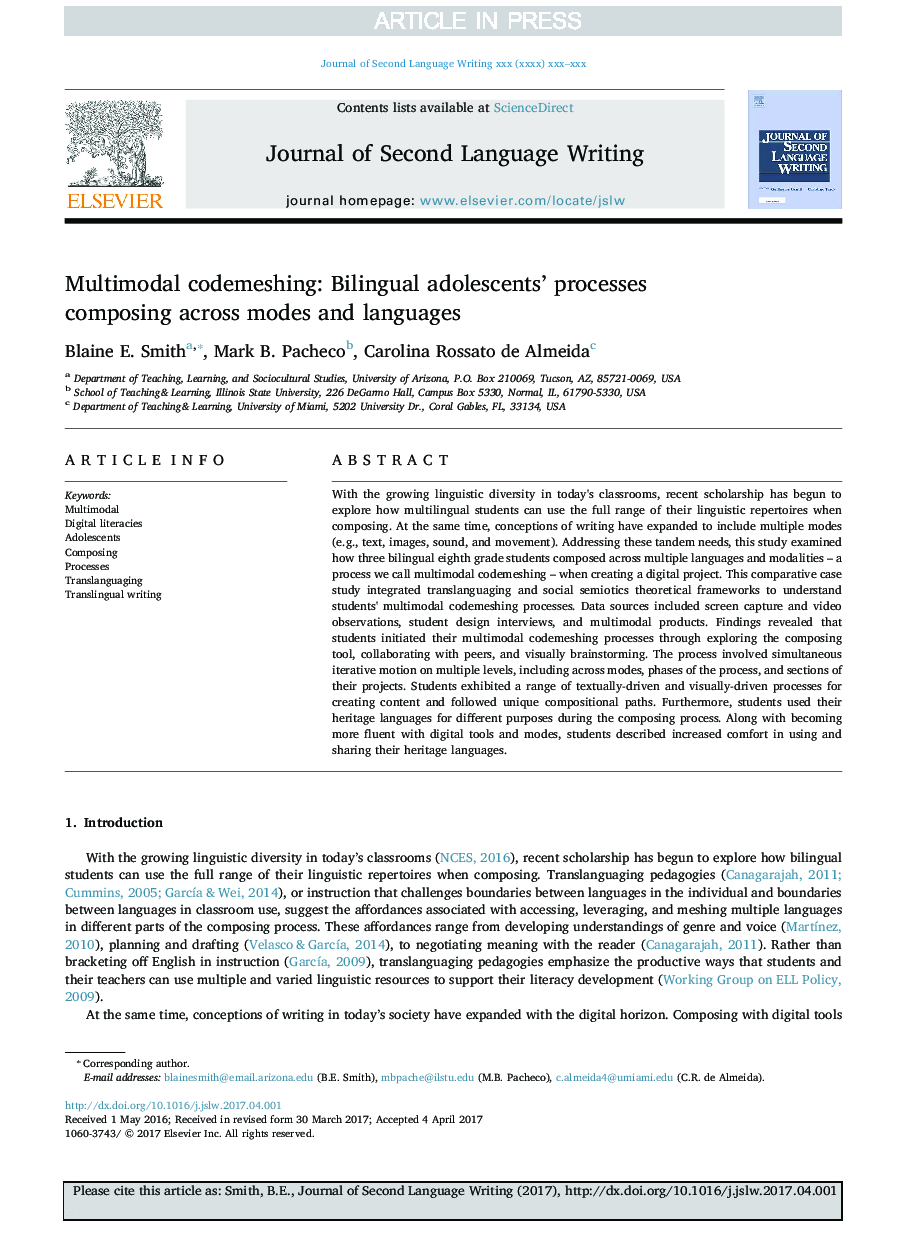| Article ID | Journal | Published Year | Pages | File Type |
|---|---|---|---|---|
| 4939855 | Journal of Second Language Writing | 2017 | 17 Pages |
Abstract
With the growing linguistic diversity in today's classrooms, recent scholarship has begun to explore how multilingual students can use the full range of their linguistic repertoires when composing. At the same time, conceptions of writing have expanded to include multiple modes (e.g., text, images, sound, and movement). Addressing these tandem needs, this study examined how three bilingual eighth grade students composed across multiple languages and modalities - a process we call multimodal codemeshing - when creating a digital project. This comparative case study integrated translanguaging and social semiotics theoretical frameworks to understand students' multimodal codemeshing processes. Data sources included screen capture and video observations, student design interviews, and multimodal products. Findings revealed that students initiated their multimodal codemeshing processes through exploring the composing tool, collaborating with peers, and visually brainstorming. The process involved simultaneous iterative motion on multiple levels, including across modes, phases of the process, and sections of their projects. Students exhibited a range of textually-driven and visually-driven processes for creating content and followed unique compositional paths. Furthermore, students used their heritage languages for different purposes during the composing process. Along with becoming more fluent with digital tools and modes, students described increased comfort in using and sharing their heritage languages.
Related Topics
Social Sciences and Humanities
Arts and Humanities
Language and Linguistics
Authors
Blaine E. Smith, Mark B. Pacheco, Carolina Rossato de Almeida,
